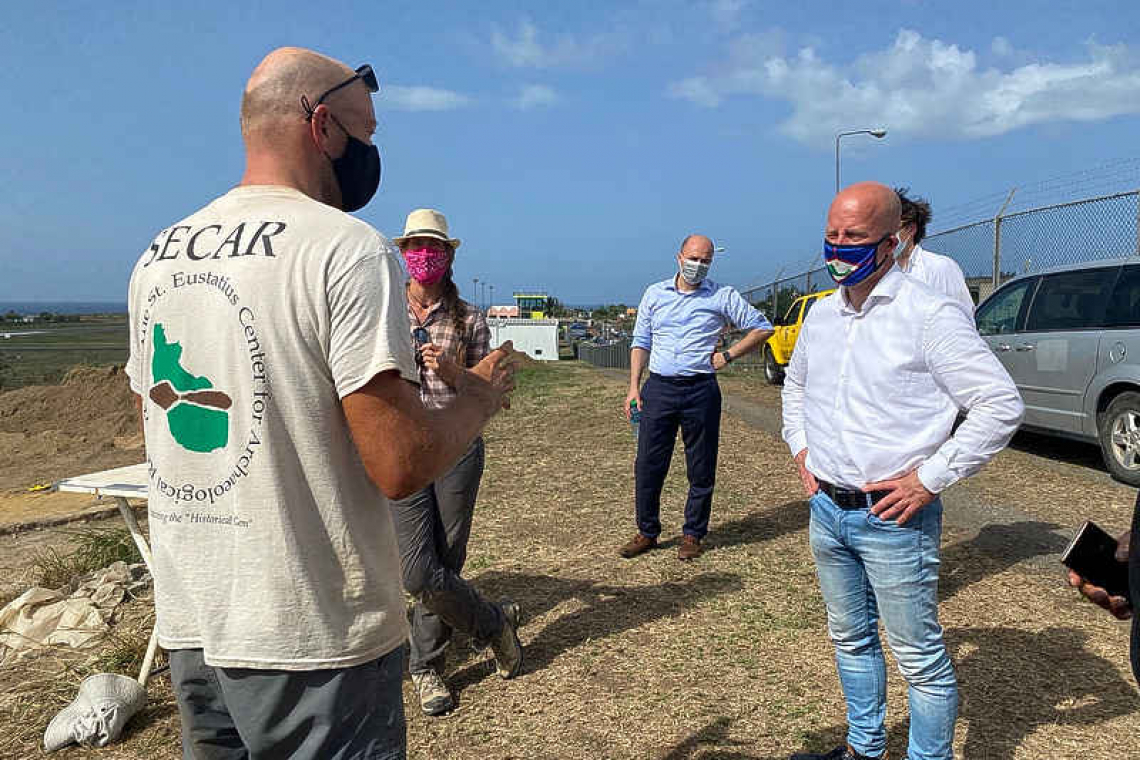Dutch State Secretary Raymond Knops during the visit.
St. EUSTATIUS--Dutch State Secretary of Home Affairs and Kingdom Relations Raymond Knops visited a number of projects in St. Eustatius during his visit to the island, including an excavation on a section of the former Golden Rock Sugar Plantation.
Knops and his entourage were given a tour by Project GR2021 Director Dr. Ruud Stelten, who described the importance of the site in regard to not only Statian history, but to world history. “We think we have discovered one of the largest burial grounds of enslaved people in the Caribbean,” he said. “We think we know a lot about their lives, but what we know was written by people in power.”
Stelten said the real story of these individuals is not known. “This is a chance for us to give these people the voice which they did not have in life and try to tell their story.”
Dr. Felicia Fricke, the head osteoarchaeologist on the project, and Alex Hinton, archaeologist and Interim Director of St. Eustatius Center for Archaeological Research (SECAR), showed Knops around the site.
Fricke discussed what bones can tell about a deceased person and Hinton explained the archaeological process and showed some of the more interesting artefacts that have been discovered to date. Knops concluded the tour by saying, “This is an important discovery and Statia is a hotspot for history.”
The project, which started on April 21, 2021, is an excavation on a section of the former Golden Rock Sugar Plantation. In September 2020, by the local government asked SECAR to dig test trenches on the grounds of Franklin D. Roosevelt International Airport. The land was due to be bulldozed, as the earth and sand at the site are needed for infrastructure projects on the island. This area may also be used for airport expansion in the future.
After digging the test trenches, it was clear that something of extreme importance and interest lay hidden underground. Stelten immediately informed the local government of the necessity to explore the grounds further, as it appeared as though the site contained a very large cemetery.
As the site is located on the grounds of a former plantation and the area where the test trenches were dug is near the former enslaved-persons settlement, it became a matter of necessity to secure the area and ensure that the research could proceed.
Former Government Commissioner Marnix van Rij and Deputy Government Commissioner Alida Francis saw the potential importance of this project and arranged for funding.
Stelten was able to organise a team of eminent scientists and archaeological students to work on the project.
A total of 33 skeletons have been unearthed since the beginning of the dig.







